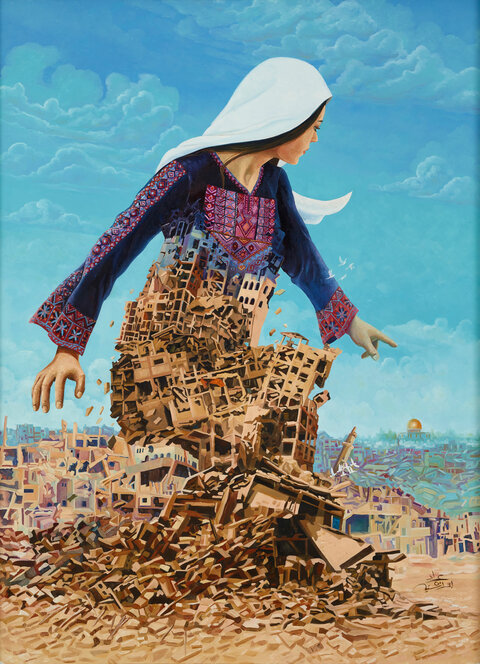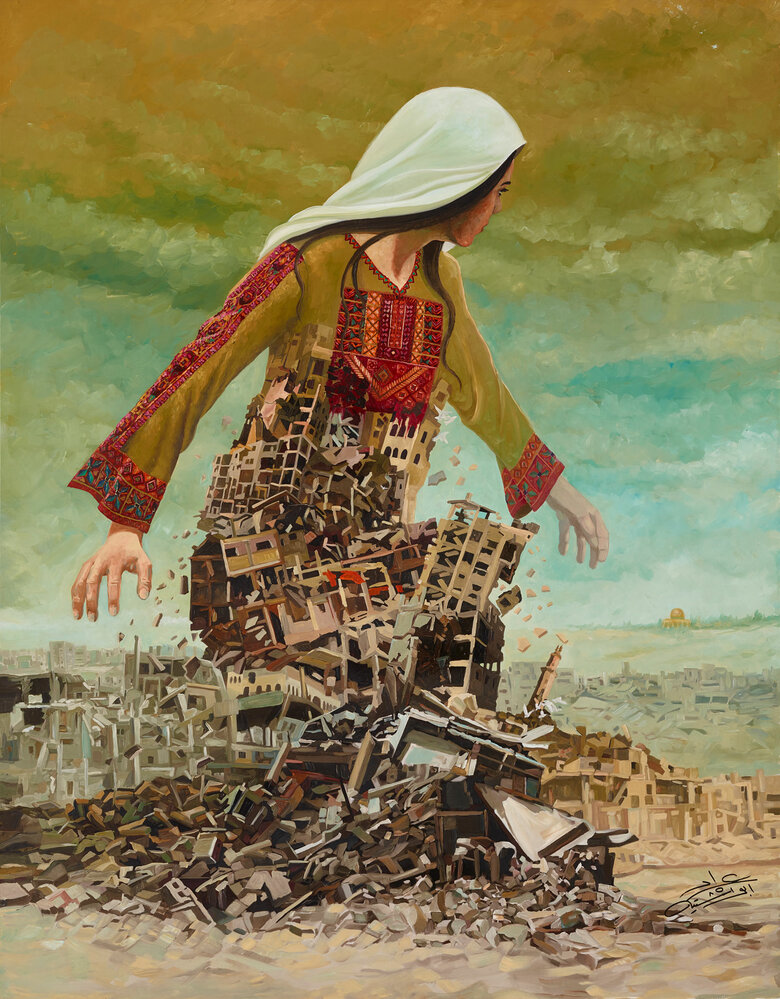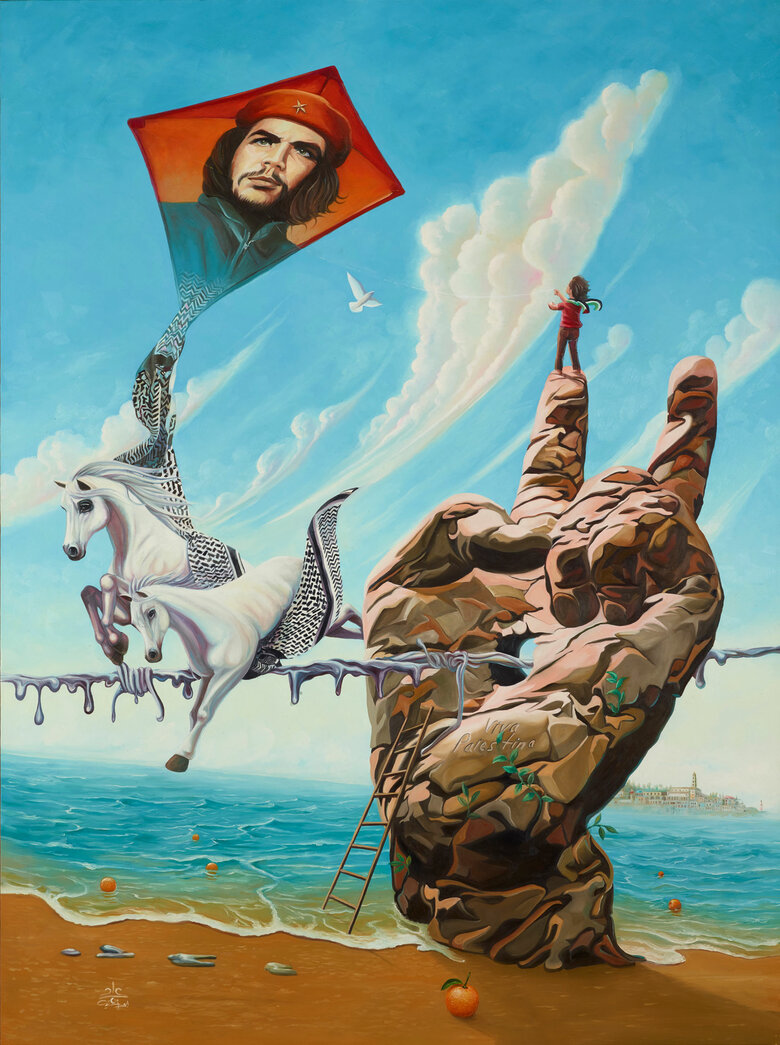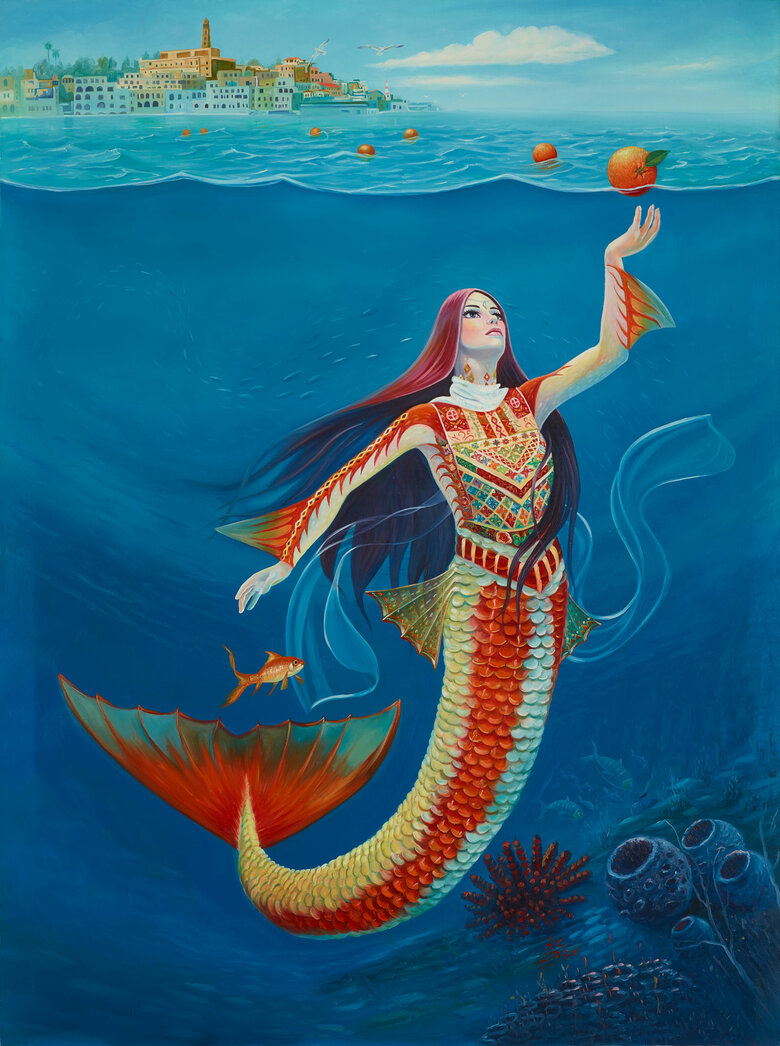Having gone viral on social media during the Israeli siege of Gaza in 2014, We shall return is arguably solely responsible for the artist’s rise to fame in the past decade. The painting depicts Gaza’s demolished ruins rising from the ashes, and morphing into the silhouette of a larger-than-life Palestinian woman in traditional dress.
An adept of symbolism, the self-taught artist frequently personifies Palestine in the form of a woman, seen as the gatekeeper of Palestinian culture, and usually wearing a Thobe, an embroidered traditional dress that has come to represent pride in Palestinian heritage.
In We shall return, the woman’s human form blends almost seamlessly with Gaza’s devastation, in a striking fluidity that is reminiscent of Dali or Goya’s surrealist approaches. Her body, turned, seems to prepare for imminent motion. Her gaze, unwavering, looks towards a Jerusalem waiting under an expectant sky. Her presence, formidable, underscore the resilience, determination and strength of the Palestinian people, a hallmark of Abu Shtayyah’s art, which he unabashedly views as a form of resistance.
This version of the original, was commissioned by Dr Ramzi Dalloul around the same time with some variations.
Signed in Arabic front lower left





_ImadAbuShtayyah_Front.jpg)
_ImadAbuShtayyah_Front.jpg)





